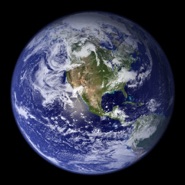Aerosol-Cloud-Climate Systems Group

Clouds and precipitation play a key role in climate by removing pollutants from the atmosphere, shielding the Earth from sunlight, acting as pistons in the atmospheric heat engine, and serving as a lynchpin in the water cycle. But clouds and precipitation are also extraordinarily dynamic over a vast range of interacting scales in time and space, and this makes them difficult to understand. Is the role of clouds in climate fundamentally simple (which would be nice) or impossibly complex (a cause for despair)? The Aerosol-Cloud-Climate-Systems Group works to try to seek ways to constrain this challenging problem.
Predicting climate change will require us to develop robust economic forecasts for the trajectory of global civilization and its greenhouse gas emissions. Normally these trajectories are considered to be influenced by public policy, as constrained by socio-economic forces. But some fairly simple non-equilibrium thermodynamic principles may offer an alternative approach that enables accurate long-term forecasts without reference to society or policy. The basis of this model is a finding that a very general measure of civilization’s wealth has been tied to its rate of energy consumption through a numerical constant.